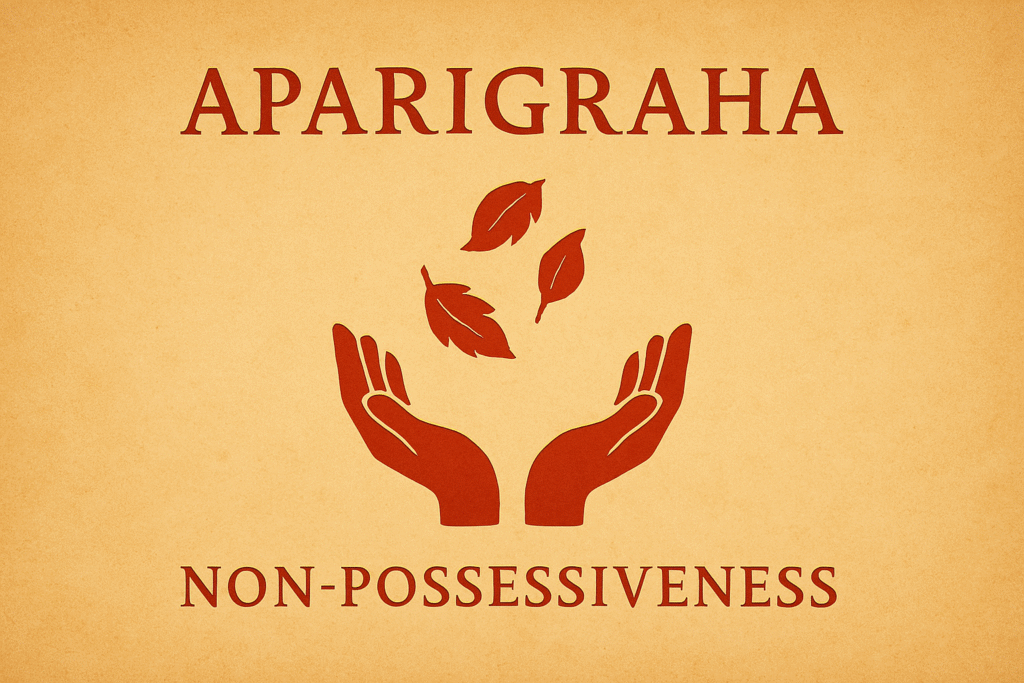Aparigraha | The Freedom of Letting Go
In a world that celebrates accumulation—of things, titles, followers, even poses—Aparigraha offers a radical invitation: release the grip. As the fifth and final Yama in Patanjali’s Eightfold Path, Aparigraha teaches us that true abundance arises not from holding on, but from letting go.
Aparigraha in Patanjali’s Yoga Sutras
Aparigraha appears in Yoga Sutra 2.30:
Ahimsa satya asteya brahmacharya aparigraha yamah
Non-violence, truthfulness, non-stealing, moderation, and non-possessiveness are the Yamas.
And is expanded in Sutra 2.39:
Aparigraha sthairye janma kathanta sambodhah
“When non-possessiveness is established, knowledge of the how and why of existence is revealed.”
This sutra suggests that when we stop clinging—whether to objects, identities, or expectations—we create space for insight. We begin to understand our deeper purpose, free from the distortions of attachment.
Aparigraha Across the Eight Limbs
Though Aparigraha is a Yama, its influence ripples through every limb of yoga:
- Niyama: Aparigraha supports Santosha (contentment) and Tapas (discipline) by encouraging simplicity and clarity.
- Asana: Practicing Aparigraha means releasing the need to “achieve” a pose. It’s about presence, not perfection.
- Pranayama: Breath becomes a tool for release—exhaling what no longer serves.
- Pratyahara: Aparigraha invites us to detach from sensory cravings and external validation.
- Dharana, Dhyana, Samadhi: These meditative limbs flourish when we let go of distractions and attachments. Aparigraha clears the path to stillness.
Aparigraha in Daily Life
Aparigraha isn’t just about decluttering your closet—it’s about decluttering your mind and heart. It asks: What am I holding onto? What would it feel like to release?
In practice, Aparigraha might look like:
- Letting go of comparison in your yoga practice.
- Releasing the need to control outcomes.
- Saying goodbye to habits that no longer align.
- Practicing gratitude for what is, rather than grasping for what isn’t.
- Trusting that enough is already here.
In the studio, Aparigraha means creating a space where students feel safe to be themselves. It means teaching that yoga is not about acquisition, but about liberation.
Aparigraha as Liberation
Aparigraha is not about deprivation—it’s about freedom. When we loosen our grip, our hands can open to receive. We make space for clarity, for truth, for transformation.
In a culture that equates worth with ownership, Aparigraha is a quiet revolution. It reminds us that we are not our possessions, our achievements, or our image. We are something deeper—something spacious, something free.
And in that spaciousness, yoga becomes a path of liberation.
Continue your growth with the Vallarta Breeze Yoga Puerto Vallarta Yoga Studio!
Whether you’re looking to dive deeper into the physical practice of yoga, The Vedas, Upanishads, Yoga Sutras, or would like to explore our blog, we have a wealth of information available for you! Better yet, join us here in the Vallarta Breeze Yoga Puerto Vallarta Yoga studio, or practice with us online! we’re excited to continue this journey with you. See you on the mat!



